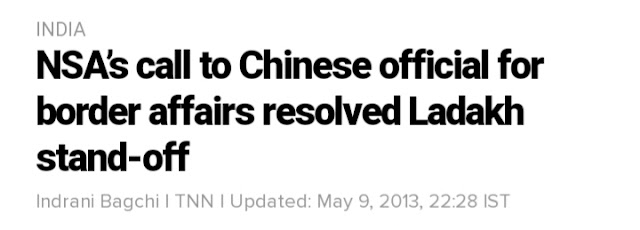For the first time, India's defence minister has publicly acknowledged that China has indeed made significant troop deployment across the LAC and India and China have locked in a border stand-off across multiple locations including Pangong Tso lake, the Galwan river valley, Debsang, hotspring areas in ladakh and at the Nathu La sector in Sikkim.
In response to this troop buildup of China, India has mobilized a large contingent of troops and equipment to the forward areas.
Currently, according to reports, thousands of Chinese troops have occupied few kilometers of Indian territory at the Galwan river valley, at Pangong Tso and at Depsang. This threatens to cut off the access of Indian troops to areas in Aksai Chin and other strategic areas including the Karakoram pass. India has claimed that it was chi which violated the sanctity of the LAC and it was Chinese troops which carried out the incursion and they are the ones who is currently occupying Indian territory.
After having been learnt its lesson during the 1962war and the 2013 incursion, India has scaled up its deployment of troops and equipment especially in and around the Depsang region. Post 2014, India has deployed sufficient no. of T-72 tanks and more no. of troops are deployed constantly on rotational basis in order to acclimatize them to high altitude warfare in the Himalayan region.
Despang region has seen many such conflicts and standoff between India and China in the past. This is because the Depsang region is a plain area as compared to the hilly terrain that is present around it and led an opening between 2 nations. It enables the easier movement of light armoured vehicles which can help in easy mobilization of troops and equipment. China has capitalized it and deployed large numbers of troops and heavier equipment by using light armoured vehicles. These development has got india extremely worried.
Whenever India and China are headed towards such a border confrontation, the most commonly asked question is whether both the countries are headed towards a conflict, especially the media in both the countries, they try to whip up patriotic and nationalistic sentiments by claiming that a war between India and China is imminent. But the chances of a full blown war between the 2 Asian powerhouse is highly unlikely because their are sufficient conflict resolution mechanism that have been put in place.
India's former national security adviser, Shiv Shankar Menon (also served as special representative for India-China boundary talks from 2010-2014) has suggested some important measures that the Indian government can use to negotiate with the Chinese government. He recalled his experience of dealing with the Chinese incursion in ladakh sector in 2013.
1.) Agreement on maintenance of peace and tranquility along the LAC signed in 1993.
2.) Agreement on confidence building measures in a military field along the LAC signed in 1996.
3.) Agreement which provided for the protocol for implementing these confidence building measures between 2 militaries.
4.) Agreement which provided for a working mechanism for promoting consultation and coordination between the 2 countries on border affairs.
5.) Border defense cooperation agreement signed in 2013 has inbuilt de-escalation mechanism in order to prevent a border standoff from escalating into a conflict.
Shiv Shankar Menon has said that their are 3 essential steps to any successful conflict resolution and these are:
1.) Both the government need to take down their rhetoric against each other and they need to stay away from from making any controversial public statement against each other.
It is appreciable that the Modi government hasn't made any such controversial statements in the public during the current standoff. Even China, for the time being, has tried to keep down its public rhetoric and this creates the right platform for both the government to negotiate away from unnecessary attention of media and the public.
2.) It is essential to show strength to the adversary in order to make them realize that we do have the capabilities to defend ourselves and deter an attack and such display of strength has a deterrence value because once the defensive capabilities are made known to the adversary, it prevents the adversary from escalating the conflict further and it pushes them towards the negotiating table.
So, since the display of strength has a deterrence value, it possibly explains the troop buildup from both the sides. It doesn't mean that a troop buildup necessarily mean a preparation towards war. Instead, it is basically a diplomatic strategy being adopted by both the sides.
3.) Well designed diplomatic negotiation will always provide a way out for the adversary. During diplomatic negotiations, if an adversary feels that he has been pushed into a corner and isolated, that is when he is more likely to escalate the crisis which could significantly increase the chances of a conflict.
Diplomatic negotiations should always work towards providing an honourable exit to both the players so that it appeals to their respective domestic audiences which reduces their need to escalate the conflict further.







Comments
Post a Comment
Please do not enter any spam link in the comment box